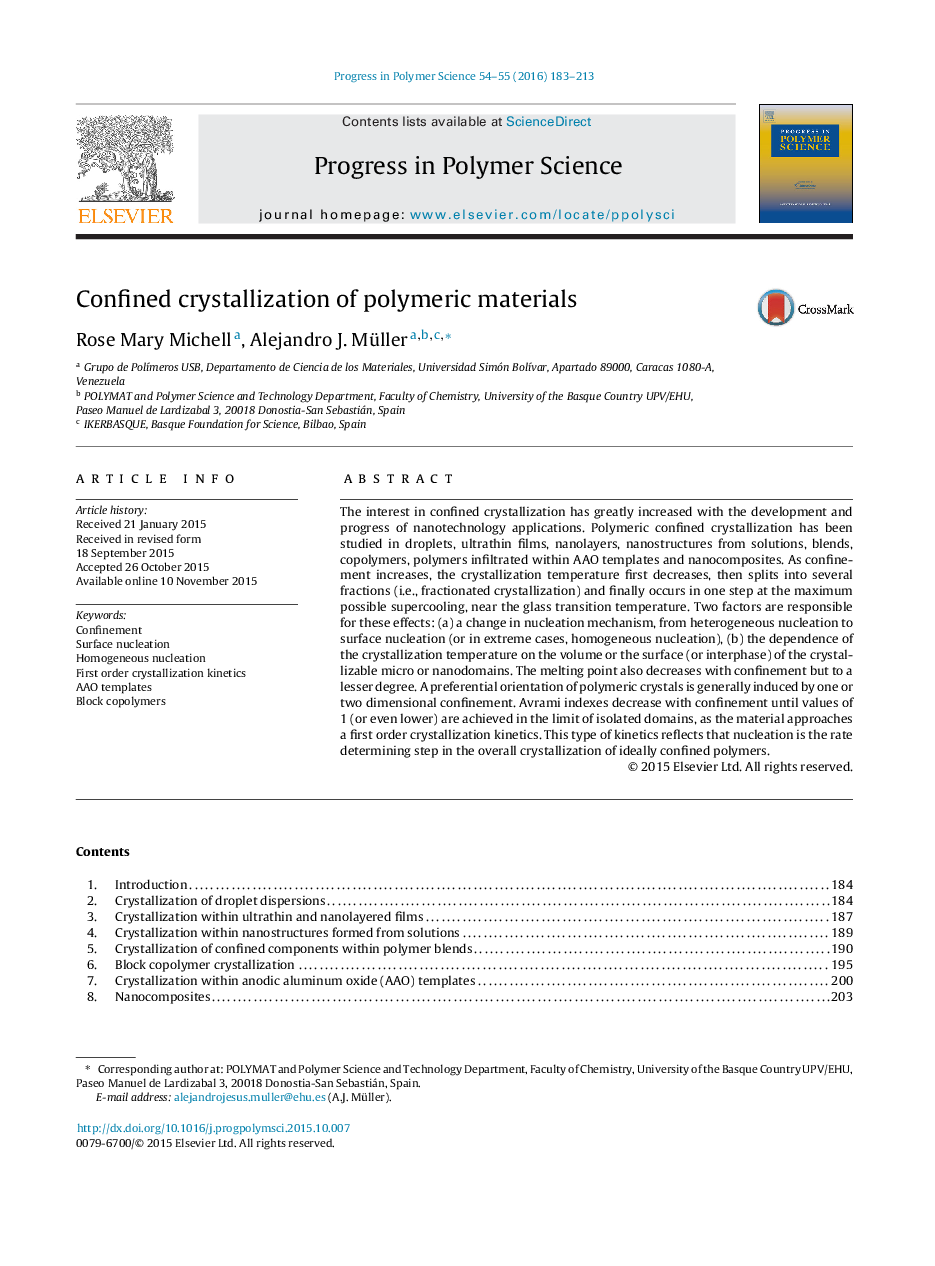| Article ID | Journal | Published Year | Pages | File Type |
|---|---|---|---|---|
| 5207996 | Progress in Polymer Science | 2016 | 31 Pages |
Abstract
The interest in confined crystallization has greatly increased with the development and progress of nanotechnology applications. Polymeric confined crystallization has been studied in droplets, ultrathin films, nanolayers, nanostructures from solutions, blends, copolymers, polymers infiltrated within AAO templates and nanocomposites. As confinement increases, the crystallization temperature first decreases, then splits into several fractions (i.e., fractionated crystallization) and finally occurs in one step at the maximum possible supercooling, near the glass transition temperature. Two factors are responsible for these effects: (a) a change in nucleation mechanism, from heterogeneous nucleation to surface nucleation (or in extreme cases, homogeneous nucleation), (b) the dependence of the crystallization temperature on the volume or the surface (or interphase) of the crystallizable micro or nanodomains. The melting point also decreases with confinement but to a lesser degree. A preferential orientation of polymeric crystals is generally induced by one or two dimensional confinement. Avrami indexes decrease with confinement until values of 1 (or even lower) are achieved in the limit of isolated domains, as the material approaches a first order crystallization kinetics. This type of kinetics reflects that nucleation is the rate determining step in the overall crystallization of ideally confined polymers.
Related Topics
Physical Sciences and Engineering
Chemistry
Organic Chemistry
Authors
Rose Mary Michell, Alejandro J. Müller,
